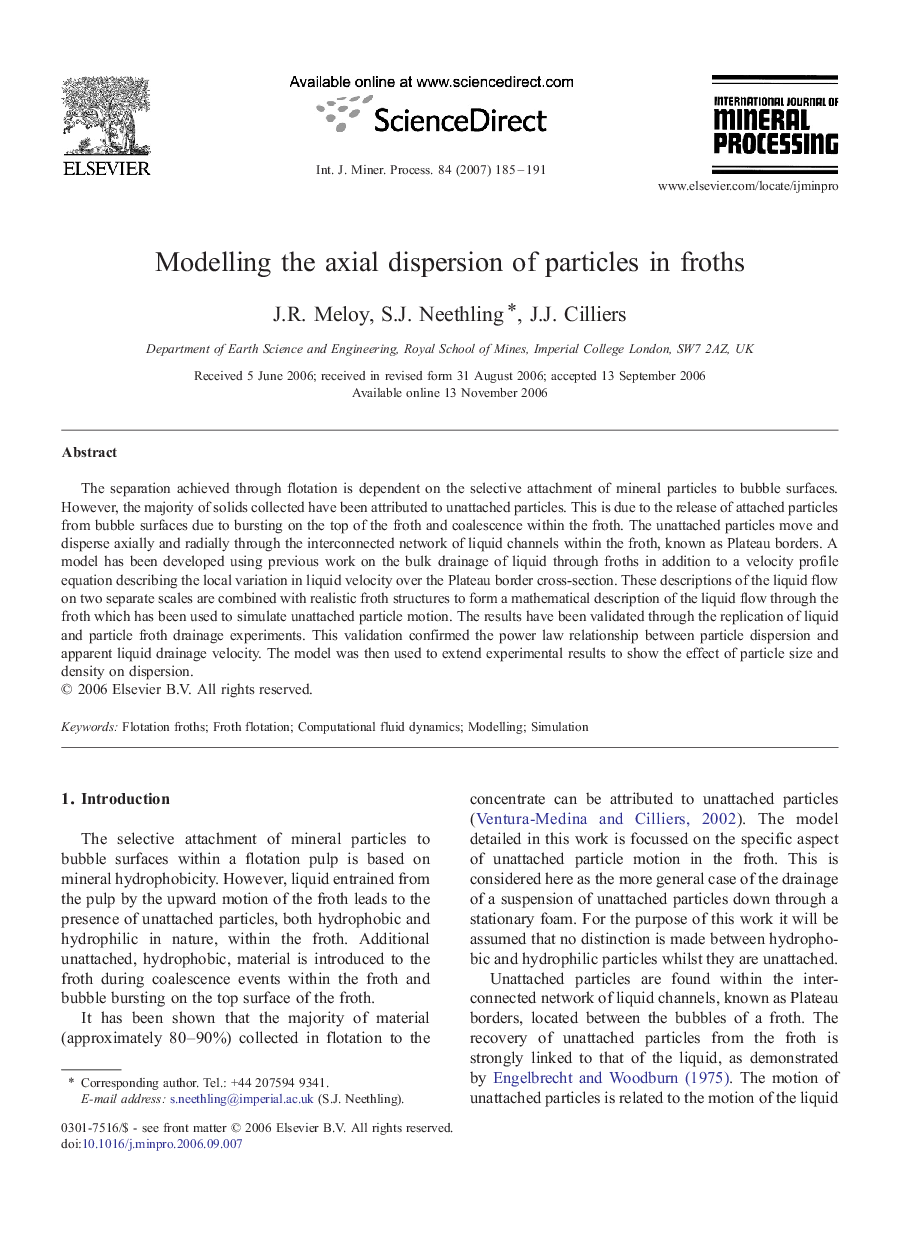| Article ID | Journal | Published Year | Pages | File Type |
|---|---|---|---|---|
| 214439 | International Journal of Mineral Processing | 2007 | 7 Pages |
The separation achieved through flotation is dependent on the selective attachment of mineral particles to bubble surfaces. However, the majority of solids collected have been attributed to unattached particles. This is due to the release of attached particles from bubble surfaces due to bursting on the top of the froth and coalescence within the froth. The unattached particles move and disperse axially and radially through the interconnected network of liquid channels within the froth, known as Plateau borders. A model has been developed using previous work on the bulk drainage of liquid through froths in addition to a velocity profile equation describing the local variation in liquid velocity over the Plateau border cross-section. These descriptions of the liquid flow on two separate scales are combined with realistic froth structures to form a mathematical description of the liquid flow through the froth which has been used to simulate unattached particle motion. The results have been validated through the replication of liquid and particle froth drainage experiments. This validation confirmed the power law relationship between particle dispersion and apparent liquid drainage velocity. The model was then used to extend experimental results to show the effect of particle size and density on dispersion.
